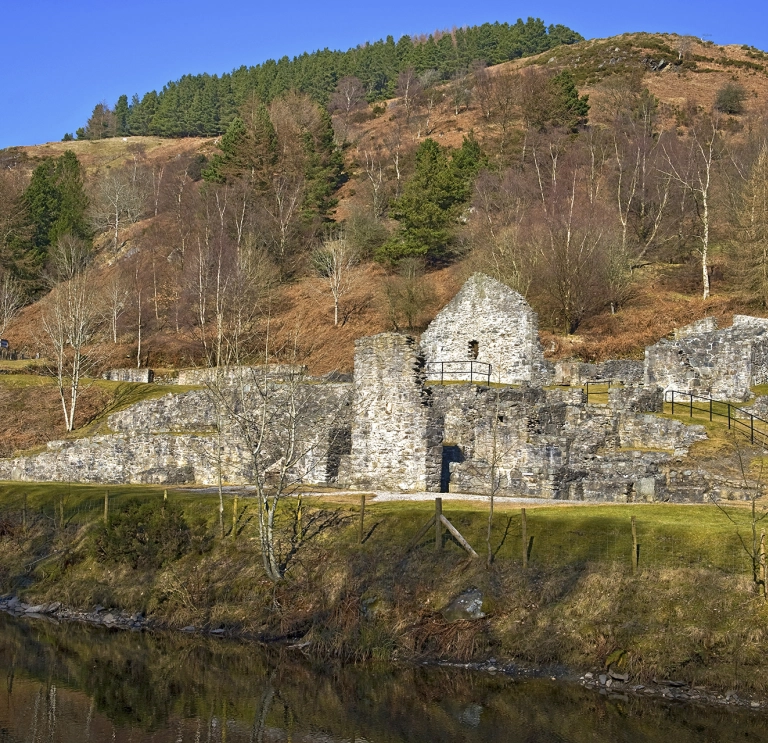Wales has a incredible underground systems made up of caves and mines. When Kate Middleton and Meghan Markle got hitched to Princes William and Harry, it was with a wedding ring made of Welsh gold. Take a look at some of the Welsh mines where gold and other metals comes from.
Read more: Exploring underground caves in Wales
Dolaucothi Gold Mines, Carmarthenshire
What child (or parent) wouldn’t like a crack at panning for gold? That’s one of the big draws at the National Trust owned Dolaucothi Gold Mines in Carmarthenshire, which were worked as recently as the 1930s. There’s also an underground tour, led by brilliantly enthusiastic local guides, who’ll explain how the Romans carved entire hillsides, and diverted water from rivers miles away, in search of the precious metal.
Clogau Gold Mine, Eryri (Snowdonia)
A second seam of gold runs from Barmouth up into the hills, and this is where the gold used for Royal wedding rings comes from. There were several gold mines here, most notably at Gwynfynydd and Clogau. They’re both closed at the moment, while clever mineralogists figure out how to extract the gold profitably, but the lovely Clogau Trail explores the old mine workings.


Great Orme Copper Mine, Llandudno
You can’t visit Llandudno without going up Great Orme, the gigantic limestone lump that overlooks the resort, ascending by foot, cable car or tram. But under the surface, the place is riddled with tunnels where our ancestors began mining for copper more than 4,000 years ago. More than four miles of tunnels and caverns have so far been discovered at the Great Orme copper mine, making it the world’s largest Bronze Age copper mine – all the more remarkable when you consider that the rock was nibbled out with bone and stone tools. There’s a good interpretive centre here, and interesting underground tours.

Copper Kingdom, Anglesey
Anglesey was once the world’s leading producer of copper, which was mined in vast quantities at Parys Mountain and exported from the nearby port of Amlwch. The Copper Kingdom heritage centre tells the story of how it all happened. Parys Mountain itself – actually, a large scarred hill that dominates the town’s southern horizon – is where the mining took place, and is a multi-coloured moonscape that’s perfect for rambling around (and as a location for sci-fi films). Although production peaked here in the 1800s, there are plans to resume mining here: there’s still plenty of zinc, copper, lead, silver and gold in them there hills.


Sygun Copper Mine, Eryri (Snowdonia)
Just outside Eryri's (Snowdonia’s) prettiest village, Beddgelert, the Sygun Copper Mine was worked for thousands of years before being abandoned in 1903. You can take a self-guided audio-visual tour of the old workings, and there’s a museum and playground above ground.



Minera Lead Mines, North Wales
The Clywedog Valley Trail follows a river that was the lifeblood of a rich industrial past. The walk starts at Minera Lead Mines, heading east towards Wrexham through a rural idyll that’s haunted with industrial remains (there were once 17 mills along the River Clywedog). The waymarked nine-mile trail passes lots of points of interest – including Bersham Ironworks - finishing on the National Trust’s Erddig estate. There’s a regular bus service to take you back to your car, although there are plenty of options for shorter, circular walks.



Bryntail Lead Mine, Mid Wales
It’s hard to believe now, but the wildest, woolliest parts of Wales were once industrialised. The picturesque ruins of Bryntail Lead Mine are a good example, standing amid the sheep-farming heartland near Llanidloes. Its position – spectacularly set at the foot of the Clywedog Dam, the tallest concrete dam in Britain – make it well worth a visit as part of a walk around the dam’s business end. The drive along Llyn Clywedog’s eastern shore also makes a spectacular short-cut to Machynlleth, which includes a viewpoint dedicated to the broadcaster Wynford Vaughan Thomas, who thought this was the finest view in Wales (and he’s got a point).


Cwm Elan Mine, Mid Wales
There are lots of abandoned mines up in the Cambrian Mountains, but we’re mentioning this as an excuse to visit the beautiful Elan Valley lakes. A farm worker was digging a ditch at the Cwm Elan estate when he struck a rich seam of lead. Cwm Elan Mine's substantial remains – including the ruins of the waterwheel pits, explosives magazine, smithy and two houses – are all the better for being so secluded.






